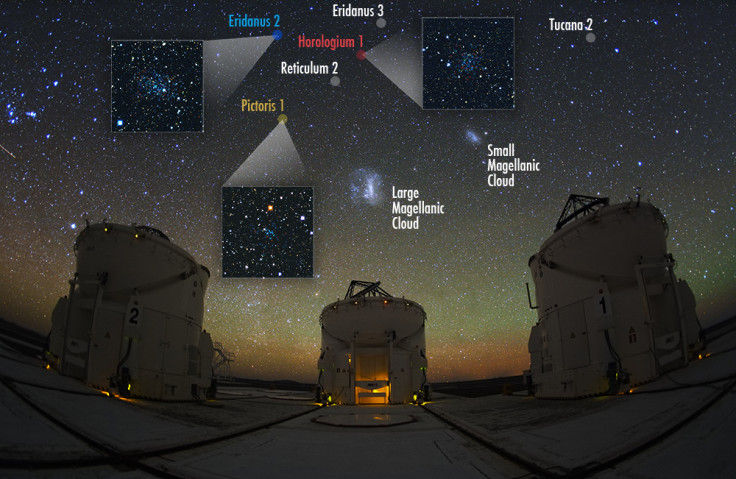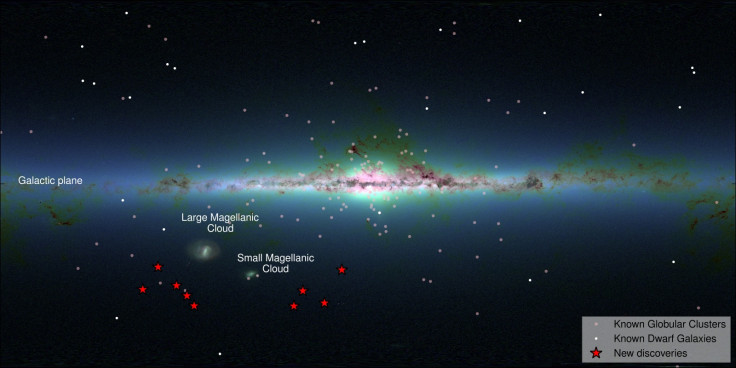Nine newly discovered dwarf satellites to solve dark matter mysteries

Almost a dozen dwarf satellites have been discovered orbiting the Milky Way and have the potential to unravel dark matter mysteries, scientists have said.
Astronomers at the University of Cambridge have identified nine previously undiscovered dwarf satellites – the largest ever to be found at the same time.
"The discovery of so many satellites in such a small area of the sky was completely unexpected," said lead author Sergey Koposov of Cambridge's Institute of Astronomy. "I could not believe my eyes."
The objects are a billion times dimmer than the Milky Way and a million times less massive. The closest is located 95,000 light years away, while the farthest is more than a million light years from Earth. Findings are published in The Astrophysical Journal.
Of the objects, three of them are definitely dwarf galaxies – small celestial objects that orbit larger galaxies. They are the smallest galaxy structures observed, containing just 5,000 stars in some cases. In comparison, the Milky Way has hundreds of billions.
Current models suggest hundreds of dwarf galaxies are in orbit around the Milky Way, but their size and dimness make them extremely hard to find.

However, their discovery is important as it could help scientists solve mysteries of dark matter. Dark matter is invisible and is only known through its gravitational pull. The universe as a whole is made up of about 68% dark energy, 27% dark matter and 5% normal matter.
Dwarf galaxies, on the other hand, are up to 99% dark matter and just 1% observable matter, making them ideal for testing existing dark matter models.
Vasily Belokurov of the Institute of Astronomy said: "Dwarf satellites are the final frontier for testing our theories of dark matter. We need to find them to determine whether our cosmological picture makes sense. Finding such a large group of satellites near the Magellanic Clouds was surprising, though, as earlier surveys of the southern sky found very little, so we were not expecting to stumble on such treasure."
The findings were released with the results of a separate study by the Dark Energy Survey, a project aiming to photograph the southern sky in unprecedented detail. Its primary tool, the Dark Energy Camera, can see galaxies up to eight billion light years away.
"The large dark matter content of Milky Way satellite galaxies makes this a significant result for both astronomy and physics," said Alex Drlica-Wagner, one of the leaders of the Dark Energy Survey analysis.
© Copyright IBTimes 2025. All rights reserved.






















